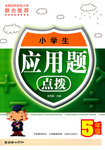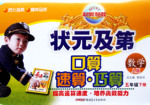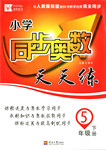题目内容
Expensive perfumes (香水) come in tiny bottles, but many hide a whale-sized secret.
To perfect a particular smell, perfume-makers often use an ingredient that comes from sperm whales, called ambergris (龙涎香). But using ambergris, which helps a perfume last longer, is strongly opposed by many people who think it is wrong to kill whales just so we can smell sweet. Joerg Bohlmann is neither a perfumer nor a whale expert. He's a plant biologist at the University of British Columbia in Canada. But his discovery of a new plant gene (基因) might push whales out of the perfume business.
The gene comes from fir trees, found throughout North America and commonly used as Christmas trees. The trees produce a chemical that can be used in perfume in place of ambergris-but with a catch. "There's a problem that many people wouldn't consider. In the tree, the chemical is mixed with many others. That makes separation a challenge," Bohlmann says. "lt's like trying to isolate sugar from a biscuit. "
This is where science becomes useful. When Bohlmann learned that fir trees produce the ambergris-like chemical, he decided to use his gene know-how to find the instructions for how to make the ambergris-substitute.
Bohlmann found that gene and took it out of the tree cells. Then he did something that might sound strange to someone who doesn't work in genetics: Bohlmann put the gene from the tree into yeast (酵母) cells.
Yeast may sound familiar because it's used to make things like bread, wine and beer. Biologists like to work with yeast because it easily adopts new genes and changes its features and behaviour. When Bohlmann put the fir tree gene into the yeast, the yeast started making the same chemical that had been produced by the tree.
Perfumers pay big money for ambergris because it is a fixative, which means it holds a smell in place on a person's body.
"Cheap perfumes smell good in the first hour or so and then everything is gone," explains Bohlmann. "But expensive perfumes are much more stable. Their smell lasts much longer, for hours or even a day after you apply them. "
The new chemical, made from the tree genes, can be used as a fixative, too. And using yeast to make it is far cheaper than acquiring ambergris.
Bohlmann admits he never thought he'd get into the perfume business. But now, he says, producers have been calling to find out how to use his technology in new perfumes.
1. It can be inferred from the passage that if a perfume contains ambergris, .
A. its user probably supports whale hunting
B. it is probably very expensive
C. its smell will last for about an hour
D. there will be a whale symbol on the bottle
2.The underlined expression "with a catch" in Paragraph 3 means____.
A. being difficult to hold
B. being too similar
C. having a hidden problem
D. needing further testing
3. According to the passage, why are yeast cells often used in genetic research?
A. They're much cheaper to use than ambergris.
B. They can reproduce much faster than other cells.
C. They share some of the qualities of plant genes.
D. They can take on the characteristics of other genes.
4.What can we learn about Joerg Bohlmann from the passage?
A. He is opposed to whale hunting.
B. He made his discovery during Christmas.
C. He has worked in the perfume industry for many years.
D. He has previously done genetic research.
 精英口算卡系列答案
精英口算卡系列答案 应用题点拨系列答案
应用题点拨系列答案 状元及第系列答案
状元及第系列答案 同步奥数系列答案
同步奥数系列答案


